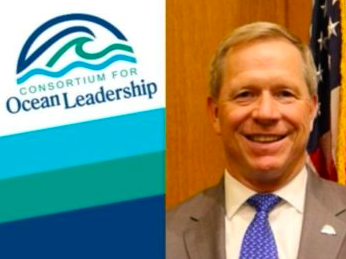
Jon White had a 32-year career in the Navy, rising to its chief meteorologist and oceanographer before his 2016 appointment to lead the Consortium. We asked him about the recent news of the impact ocean warming is having on our planet’s climate.
ODP: There have been several studies in recent weeks about the oceans warming faster than we thought, and unprecedented melting in Greenland and in the Antarctic. Is this news as bad as it sounds?
JW: Yes, or maybe worse. Observed trends associated with ocean warming and glacial ice melt across the planet consistently exceed most expectations and predictions, thus there is good reason to believe we are underestimating the pace (and impact) of change. Other changes and effects across our oceanic planet, such as the massive bleaching of coral reefs, are also indicative that we are “shooting behind the fish” as we try to capture, model, and predict the complex, interrelated processes changing our climate and our ocean at an alarming pace.
ODP: Which will have more of an impact on the U.S. in your view — the Greenland ice sheets melting or the Antarctic ice melting?
JW: Near-term (next 20 years) – the Greenland ice sheet. Based on current observations and understanding, the influence of rapidly warming Arctic waters and associated (northern) polar atmospheric changes are causing melting of Greenland ice at a rate much faster than that on the (much larger) continent of Antarctica. Sea-level rise from ongoing Greenland ice melt, as well as associated changes to weather patterns, will dramatically impact the U.S. coastal areas and much, much more (think droughts, fires, floods, catastrophic storms, etc.). After that, if we are unable to stem planetary warming from greenhouse gas emissions, Antarctic ice melt will likely cause changes in sea level on the order of meters. This will dramatically alter the coastal geography and infrastructure, requiring extensive adaptation and relocation efforts that we can only begin to imagine.
ODP: Do we need more and better climate “forecasts” and “predictions” to prepare for the impacts of climate change so that we can do a better job of adaptation?
JW: Absolutely! A true understanding of the complex, interrelated Earth system physics that describe ongoing and future changes on the scale of years and decades remains mostly beyond present capabilities, making predictions related to the timing and extent of impacts rough estimates at best. Continued scientific research is critical to our ability to reduce uncertainty and effect better decision-making. However, this is not an excuse for doing nothing now. That would be tantamount to standing on the track in front of an approaching train and not moving while waiting to see if it will stop before it gets to you.
ODP: How did the shutdown impact agencies like DoD that remained open?
JW: Many of our national scientific research programs were set back months if not years due to the shutdown. Funded agencies, like DoD and DoE, depend upon partnerships with other agencies that were shut down to conduct research and development. This includes funding extramural research efforts that are now delayed by months as proposal reviews and processing of research grants were suspended. These partnership efforts were largely dormant during the shutdown, and recovery will be slow at best. Some shipboard, field, and laboratory research activities have been canceled or significantly postponed as windows were missed and logistical chains interrupted, impacting multiple agencies.
ODP: How did the shutdown impact universities and contractors who also depend upon federal funds?
JW: The extramural, government-funded research activities that were held in abeyance during the shutdown precluded funding of researchers at universities and institutions across the nation, as well as contractors who rely on government funding but had to reassign personnel to new, sometimes permanent roles due to the extended shutdown. Typically, contract personnel will not be reimbursed for time missed, and some researchers and students may have moved to other institutions and projects that are not tied to federal funding.
Thanks, Jon, for helping us to understand the bigger climate forces at work and the impacts of the shutdown on crucial government research.
February 1, 2019 » climate change, forecast, global warming, Greenland, ice, melt, ocean, science


